Hole in the RV Interior Wall is a common issue that can occur due to age or wear and tear. If you have hole in your RV interior wall, then fret not! This article will provide tips on how to repair the hole for a quick and easy fix.
Table of Contents
What Are RV Walls Made of?
Vinyl
RV walls are typically made of either vinyl, fiberboard or plywood. Vinyl is the most common type used in modern RVs and can be found everywhere from motorhomes to fifth wheels and travel trailers.
If you have a hole in your RV’s interior wall and it’s made of vinyl, then there’s no need to replace the entire wall. Instead, you can easily patch up the hole with some vinyl repair tape or kit. [1]
Fiberboard
Fiberboard is a less common material used in some older RVs and can be found in walls, floors, and cabinets. It is lightweight yet strong and often used as an insulation layer between the interior walls of your RV and its outer skin.
In the case of fiberboard RV walls, you will need to patch up the hole with a fiberglass repair kit, which can be found at most home improvement stores. This material is easy to work with and will provide you with a strong repair that looks good and lasts long. [1]
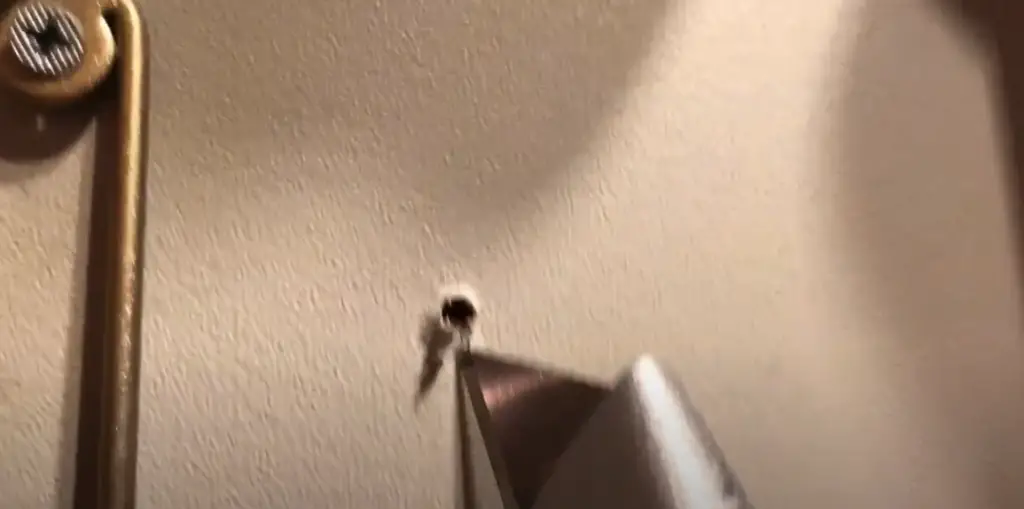
Plywood
Plywood is another material used in some older RVs and can be found in walls, floors, and cabinets. It is made up of several layers of thin sheets that are glued together which makes it extremely durable.
If your RV’s interior wall has a hole in the plywood, you will need to use a wood repair kit to patch it up. These kits come with everything you need to fill, sand and even paint the area for a perfect finish. [1]
Determining What Caused the Damage
Before you can begin to repair the hole in your RV’s interior wall, you need to determine what caused it in the first place. In some cases, the cause is obvious, such as a recent leaky pipe or a window left open during inclement weather. Other times, however, there may be an underlying issue that needs to be addressed before starting the repair.
For example, if a pipe or window was causing the water damage, you should fix it immediately so that the problem doesn’t happen again. If the hole was caused by an accident or animal infestation, investigate further to make sure there isn’t something else going on. It could be a sign of a structural issue or weak spot in your RV’s interior wall that needs to be addressed. [1]
Ten Minute Patch
An easy way to repair a hole in your RV’s interior wall is by using the ten minute patch job technique. This method can be used for any size and shape of hole, so no matter how deep or wide the damage is, you’ll be able to make it look better with this process.
First, gather together all the necessary supplies, such as a putty knife, some spackling compound, fine-grit sandpaper, and a rag. Then, you’ll need to remove any jagged edges from the hole to make it easier to patch. Using your putty knife, scrape away any loose debris or paint chips until the area is smooth.
Next, apply a generous amount of spackling compound to the hole. This should completely cover the area and fill in any gaps or hollows. Once it is dry (typically about 10 minutes), use your sandpaper to smooth out the patch until it looks seamless with the surrounding wall.
Finally, take your damp rag and clean away any dust or debris that has been created during the repair process. If you plan to paint over the patch job, wait for the spackling compound to completely dry before doing so. Once everything is dry, it’s time to enjoy your newly repaired RV interior wall! [1]
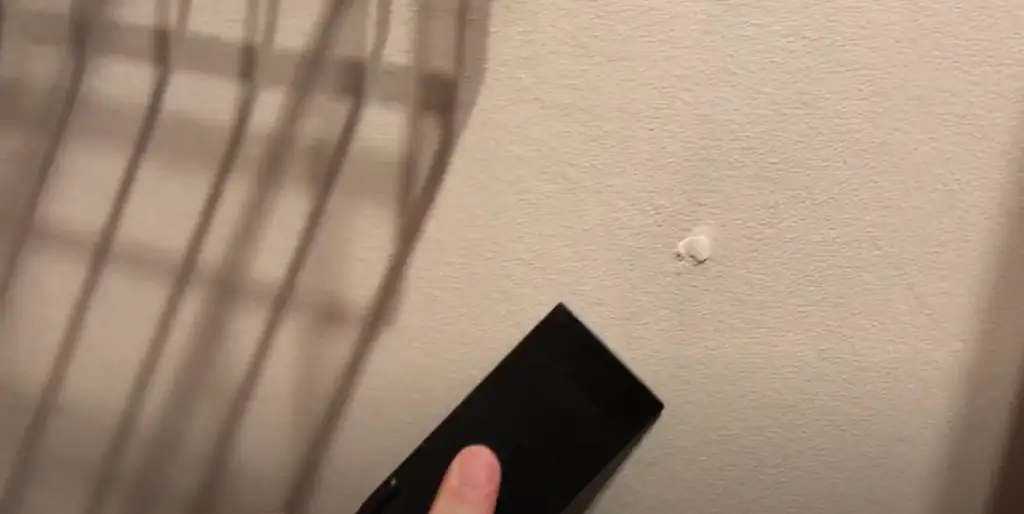
Choosing Your Replacement Material for Larger Holes or Damage
Use caulking and a good caulking gun
When the hole or damage to the RV interior wall is too large for patching, you may need to replace the entire wall section with a suitable replacement material.
After replacing the panel, use caulking and a good caulking gun to seal up any gaps between the new panel and existing wall surface. Be sure to check the manufacturer’s instructions on how thick the caulk should be applied, as too much will create an unsightly finish. [3]
Use mold epoxy putty based on the hole’s size and shape
For smaller holes, you can use a mold epoxy putty as an alternative to patching. This is especially useful for odd-shaped holes, such as those created by plumbing and electrical wiring. Before applying the epoxy putty, be sure to clean the area around the hole with soap and water or rubbing alcohol to remove any dirt or debris.
The epoxy putty must then be kneaded together until it forms a malleable material which can be applied directly onto the surface of the RV interior wall. Using a putty knife, smooth out the epoxy and blend it in with its surroundings as much as possible. [3]
Use sealant tape for easy and fast repairs
If you don’t have the time or inclination to use epoxy putty, sealant tape might be a good alternative. This comes in handy when you need to make small and shallow repairs quickly and easily. To apply, simply cut off a piece of tape that is larger than the hole or damage area, then press it onto the surface of the RV wall. Finally, use a putty knife to flatten the tape out and adhere it to the wall.
Sealant tape can be found in different shapes, sizes, and colors. Choose wisely depending on where you need to make the repair so that it will blend well with its surroundings. [3]
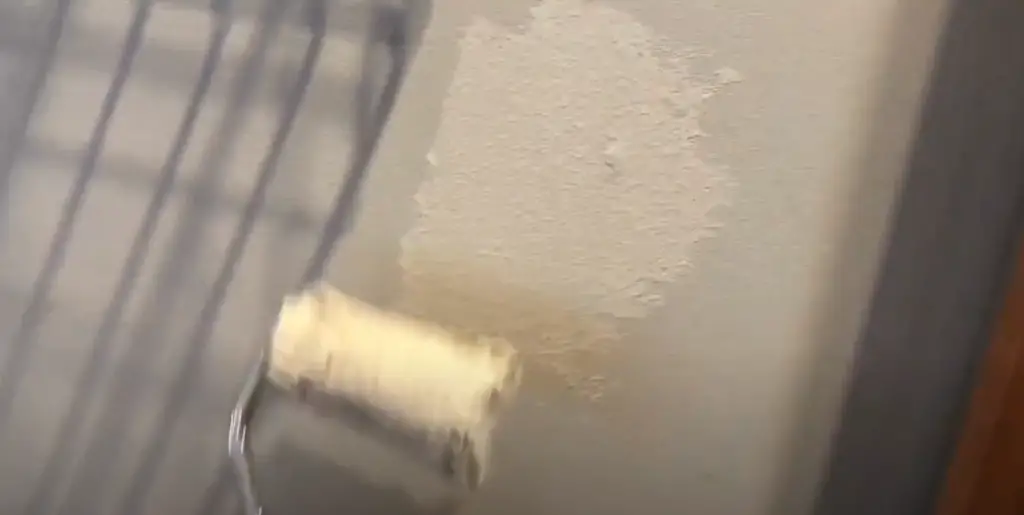
Removing the Old Panels
The first step in repairing a hole in your RV interior wall is to remove the old paneling. To do this, you’ll need a pry bar and a pair of pliers. Start by locating the area where the panel was installed and use your pry bar to carefully remove it from its mounting points. As you remove each piece, make sure to use your pliers to remove any nails or screws that may be holding it in place. After you have removed the paneling, you’ll need to inspect the wall for damage or rot. If there is significant damage or rot present, it will need to be repaired prior to installing the new paneling. [1]
Installing the New Panel
- Measure the hole in your RV’s interior wall and cut a piece of paneling to that size. If you need additional material, consider using corner molding or quarter round trim pieces to cover any gaps. Be sure to use materials that are suitable for installation in an RV, such as marine-grade plywood, fiberglass, or aluminum.
- Sand the edges of the new panel so they are smooth and free of sharp edges.
- Apply a thin layer of adhesive to the backside of the panel and press it into place. Hold it in position for several minutes until it is secure.
- If necessary, use screws to secure the panel further. Drill pilot holes first and then use self-tapping screws to ensure a tight fit.
- If you are using trim pieces, apply glue to the backside of them and then carefully press them into place around the edges of the new panel.
- Once everything is in place, use a putty knife to fill any gaps with caulk. Allow the caulk to dry completely before moving onto the next step.
- Use sandpaper or a sander to smooth out the surface of your wall and panel.
- Prime and paint your repaired RV interior wall as desired. [1]
What Are Some Good Adhesives?
When repairing a hole in an RV interior wall, using the right adhesive is essential. Different materials will require different adhesives, so it’s important to know what you’re working with before picking one up.
For sheet metal walls, epoxy or a super glue-type adhesive should do the trick. These adhesives are designed to bond quickly and form strong bonds between surfaces, making them ideal for sheet metal applications. [1]
Repairing RV Exterior Walls
Exterior Wall Delamination
If you’ve noticed that the exterior wall of your RV is peeling,, or delaminating, this may be an indication of water damage. This can be a tricky problem to fix and should not be taken lightly. To repair it, you will need to remove the affected area of the wall in order for the repairs to be done properly.
To do this, you will need a few tools, including a drill and jigsaw or sawzall for cutting through the wall’s upper and lower sections. You will also need insulation material and sealant to fill in any gaps between the new panels that are installed. Additionally, you may choose to replace the window, if it was affected by the water damage. [2]
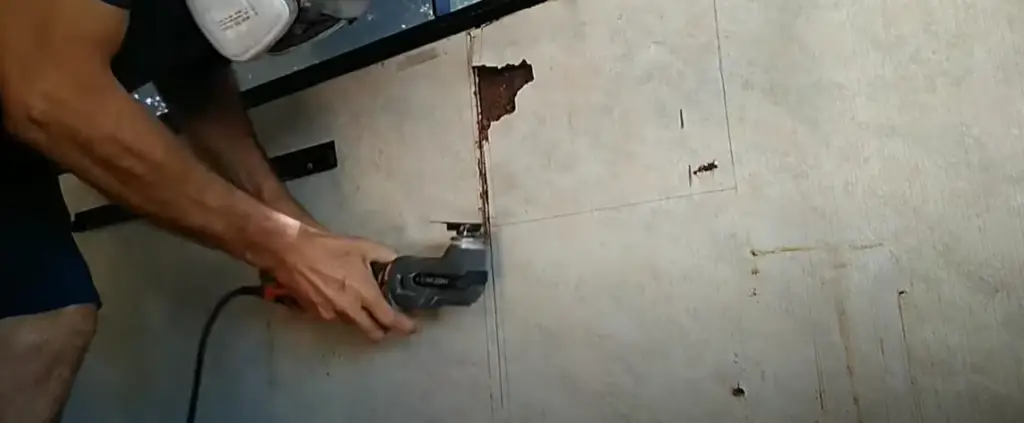
Repair RV Fiberglass Exterior
If your RV’s exterior walls are made of fiberglass, you will need to use a patching compound in order to repair any holes. First, cut out the damaged portion and make sure that the edges are smooth by using some sandpaper. Once this is done, apply a layer of resin over the hole and then cover it with a layer of fiberglass matting. Allow it to dry and then sand down the patch until it is smooth. Finally, apply a sealant over the patch. [2]
Repair RV Aluminum Exterior
For aluminum exterior walls, you can use either a rivet or self-drilling screw to secure the panels in place. Ensure that the panels fit together snugly and fill in any gaps with a sealant or putty. Then, use a rivet gun to attach the panels. If you opt for self-drilling screws, make sure that they are designed specifically for aluminum walls. [2]
How to Fix a Hole in a Camper Wall?
Fixing a hole in your camper wall can seem like a daunting task, but with the right supplies and a bit of patience, it can be done easily. Here are some tips to help you repair the hole:
- First, prepare the area around the hole by cleaning any dust or debris that may have accumulated around it.
- Next, use a putty knife to remove any loose paint or caulking from around the hole.
- Now, measure the hole and use some wood filler or spackling paste to fill it in and create a smooth surface. Make sure not to overfill it though – you want to be able to sand it down later.
- After allowing the filler to dry, sand the area with fine-grit sandpaper until it is smooth.
- Prime the area and allow it to dry before applying a few coats of paint that match the existing finish on your wall.
- Finally, apply some caulking around the edges of the hole to seal it and prevent moisture from entering. [3]
FAQ
How do you fix a hole in an interior wall?
The best method for repairing a hole in an interior wall of your RV depends largely on the size and location of the opening. If it is small, you may be able to use spackling paste or joint compound to fill and smooth out the area. Larger holes might require that you cut away damaged sections of drywall and replace them with new material.
If the hole is very small, you may be able to simply fill it with spackling paste or joint compound using a putty knife. Allow the paste to dry completely before sanding, painting, and/or wallpapering over the area.
How do you fix a screw hole in an RV wall?
If the screw hole is small, you can fill it with spackling paste or joint compound just like a regular wall. If the hole is larger than a few millimeters in diameter, however, you will need to replace that section of drywall. To do this, cut out a piece of new drywall slightly larger than the damaged section, and then use screws to secure the new piece in place.
If you don’t have access to drywall, you can use a wood panel instead. Just make sure it is sealed properly to keep out moisture that could damage the interior wall of your RV over time.
How do you fill holes in a camper?
Small holes in a camper can generally be filled with spackling paste or joint compound. Use a putty knife to spread the paste into the hole and smooth it out over the surface. Allow the paste to dry completely before sanding, painting, and/or wallpapering over the area.
For larger holes, you may need to cut away the damaged section of drywall and replace it with a new piece. You can also use wood panels instead of drywall if needed. Just make sure they are sealed properly to protect the interior wall of your camper from moisture damage.
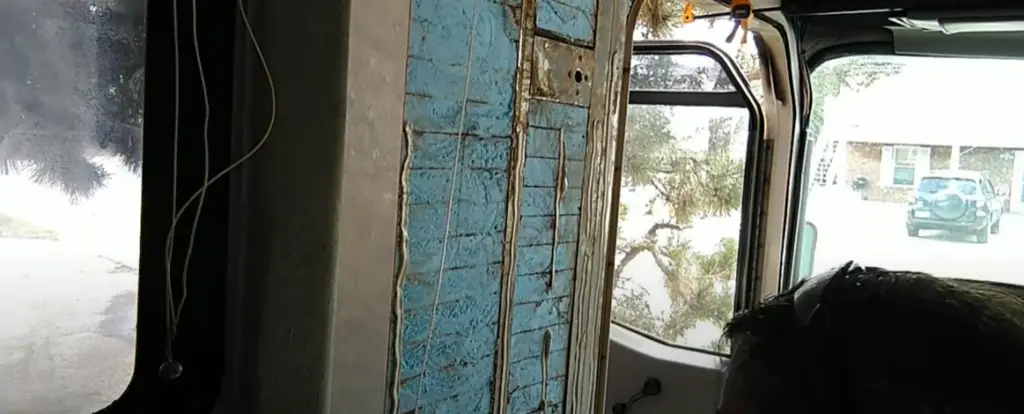
What can I use for RV interior walls?
RV interior walls are generally made of drywall, wood panels, or a combination of the two. You can also use vinyl wall coverings for extra protection against wear and tear. When choosing materials for your RV’s interior walls, make sure you consider factors like cost, maintenance requirements, and durability.
How thick are the interior walls in an RV?
The thickness of your RV’s interior walls will depend on the type of material used. Drywall is typically ½ inch to 5/8 inch thick, while wood panels are usually ¼ inch thick. Vinyl wall coverings are generally about 0.030 inches thick.
What is the best material for RV walls?
The best material for RV walls depends on your personal preferences and budget. Drywall is generally the most affordable option, but it can be easily damaged by moisture. Wood panels are more durable and provide extra insulation, but they come at a higher cost. Vinyl wall coverings are an effective way to protect against wear and tear, but they may be more expensive than other options. Consider all of your options carefully before making a decision.
What is behind RV walls?
The material behind RV walls varies depending on the type of wall covering used. Drywall is usually installed directly over a plywood or composite wood backing, while wood panels are typically attached to metal framing. Vinyl wall coverings generally have an insulation layer behind them for extra protection against moisture.
Can you paint inside RV walls?
Yes, you can paint inside RV walls. However, it is important to make sure that the surface is clean and free of any debris before doing so. You should also be aware of any special requirements for painting RV walls depending on the type of material used. For best results, use a high-quality paint designed specifically for interior wall surfaces.
What are caravan internal walls made of?
Caravan internal walls are usually made of drywall, wood panels, or a combination of the two. Some caravans may also have vinyl wall coverings for extra protection against wear and tear. When choosing materials for your caravan’s interior walls, make sure you consider factors like cost, maintenance requirements, and durability.
Useful Video: How to Fill Holes in RV Walls
Conclusion
Overall, repairing a hole in your RV interior wall can be a time consuming but rewarding task. With patience and the right materials you should be able to successfully fix any minor or moderate damage. If you’re not confident in your repair skills, it is always advisable to get professional help if needed. Be sure to use safety measures when working with sharp tools and hazardous materials. For further information about how to repair hole in RV interior wall, you can refer to the manufacturer’s manual or contact a qualified technician for assistance. With proper care and maintenance, you should have no trouble keeping your RV’s interior walls in good condition for years to come. Happy camping!
References:
- https://crazytroll.no/how-to-repair-a-hole-in-your-rvs-interior-wall/
- https://livingpioneer.com/how-to-repair-hole-in-rv-wall/
- https://happycampervanning.com/how-to-repair-hole-in-rv-interior-wall/

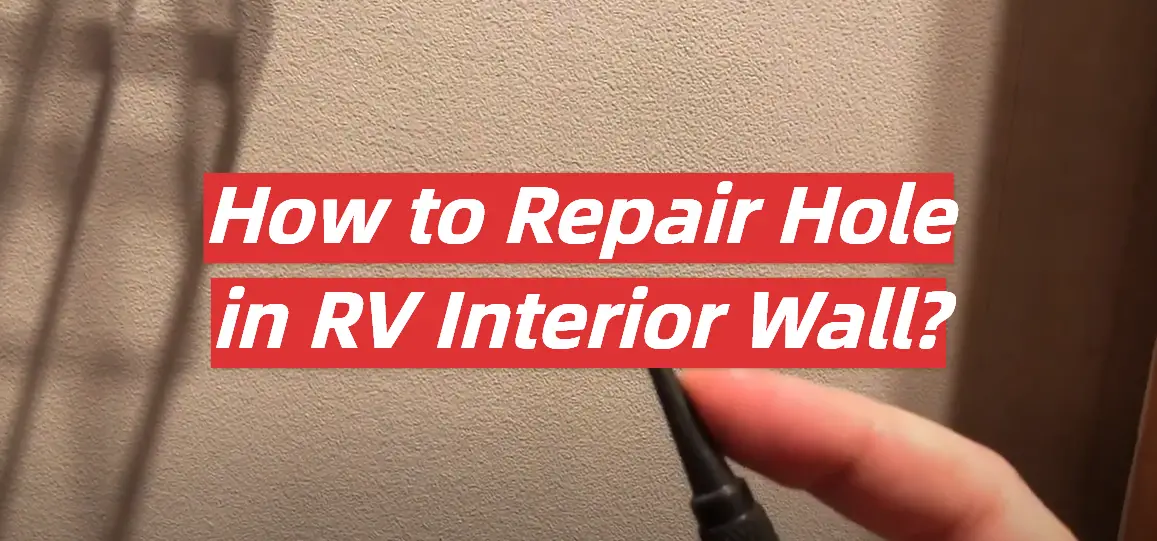
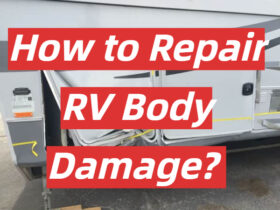
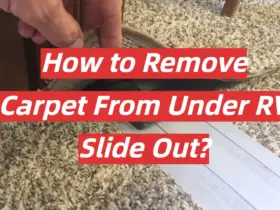
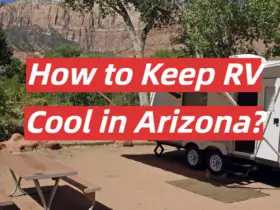
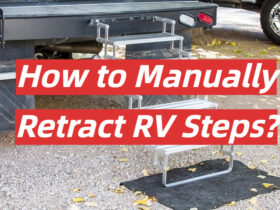
Leave a Reply